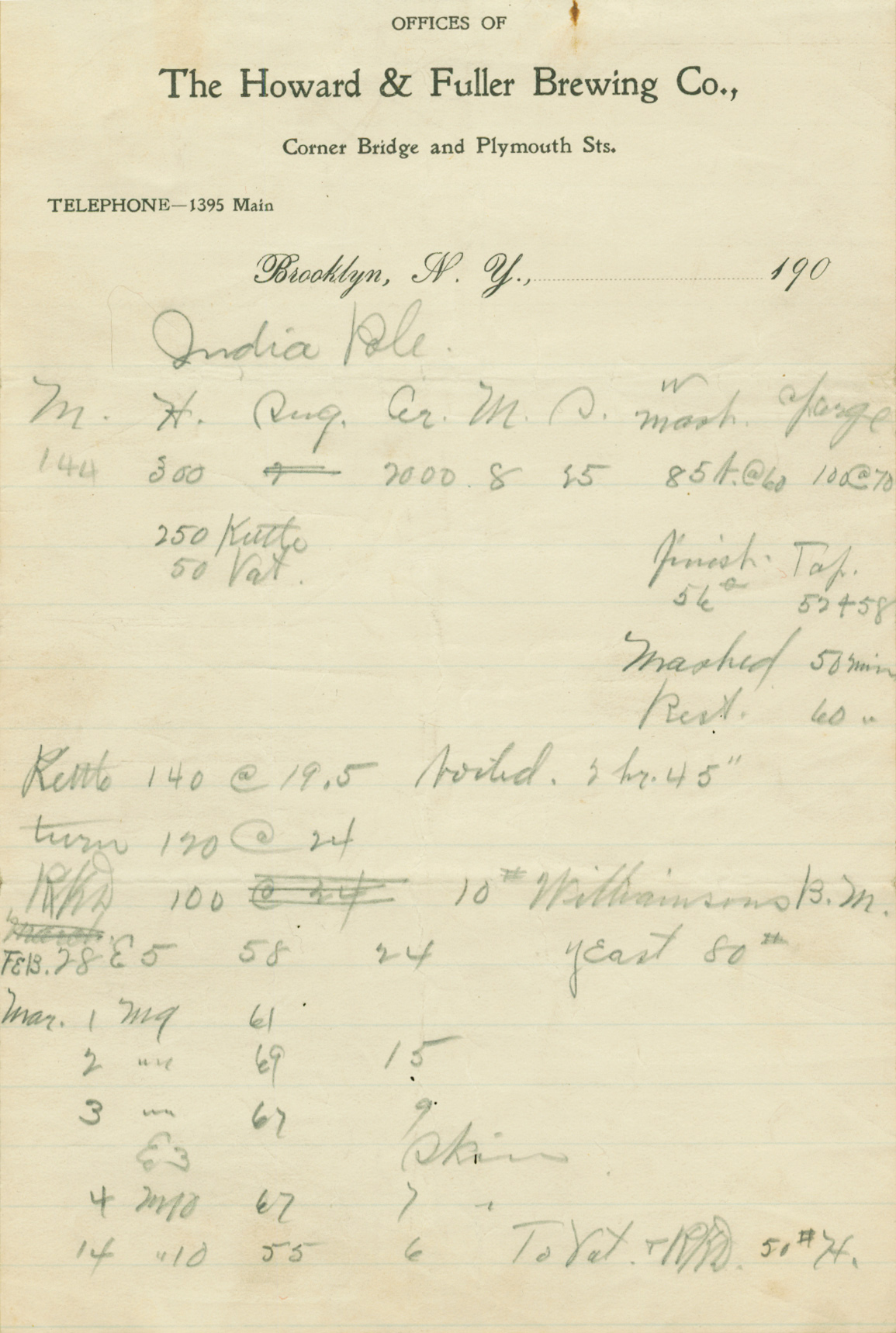We think of India pale ales as representing the glory of the British Empire. And indeed, they served as global ambassadors of England at its zenith, shipping to the far-flung corners of the Earth. Everywhere they reached, they made an impression. This pale, clear, hoppy beer was a dramatic change from the darker and less hoppy beers generally popular in the 19th century. India pale ales were not just different, they were modern.
There’s a bit of shorthand in the brewer’s notes, so the recipe takes some guesswork to figure out.

Brewers in many places responded by brewing their own interpretations. In Plsen, Bohemia, a new pale lager was created in 1842. Brewers in Belgium saw an opportunity to take advantage of the sizable trade in British ales there and produced their own versions.
In America, the lager revolution had largely displaced British-style ales by 1870 or so, but a soft spot remained for all things British. Porter and then pale ale were imported in huge volume in the mid to late 19th century. Many breweries, especially in eastern states, didn’t stop brewing ales when the lagers came in, but the ales did lean toward brighter, crisper, cleaner flavors. India pale ale was part of the mix, usually at the very top end of a brewery’s range of products.
Deciphering the Traditional Recipe
A session on eBay led to my acquiring a handwritten recipe from the Howard & Fuller Brewing Co. of Brooklyn, NY. One Hundred Years of Brewing (1903) says: “This house manufactures fine ales and porters only and represents the oldest business in those lines on Long Island.” Founded by Junius A. Fuller in 1835, the brewery moved to the corner of Bridge and Plymouth streets, a neighborhood now called DUMBO (Down Under the Manhattan Bridge Overpass), an up-and-coming area near the Brooklyn Bridge. The stationery is preprinted with the date 190_, so the recipe probably stems from that decade. There’s a bit of shorthand in the brewer’s notes, so the recipe takes some guesswork to figure out.
Malt is listed as “144,” which could be bushels (34 pounds of malt), but based on the 24 degrees Balling (1100 original gravity, or OG) listed as the strength of the wort, it must have been hundredweight, a measure of 112 pounds. This gives us 4.33 pounds per gallon. Since the malt is unspecified, I think we have to assume it’s domestic lager malt. Whether it is two- or six-row malt is an open question, but I’m going to recommend two-row, as it is much less likely to impart a husky taste as often happens with 100 percent, six-row recipes.
The brewer lists a category for sugar, writes the number “2,” then marks it out, which gives us permission to use a little sugar—an ounce per gallon—if we wish. It’s possible that the brewer was planning on using the sugar to adjust the gravity a bit and then found he didn’t need it, so the beer was brewed with 100 percent malt. Ten pounds of “Williamson B. M.” are listed as a late kettle addition. Williamson is a company that to this day manufactures caramel and other colorings for the food and beverage industry, so it seems likely that a small quantity of black malt was used to boost the color.
This was a hoppy beer, with 220 pounds of hops in the kettle and another 50 added when the beer was transferred to the aging vat. This corresponds to just over 2 pounds per barrel in the kettle, plus the dry hopping. That’s 6 ounces in a 5-gallon batch—plenty bitter.









